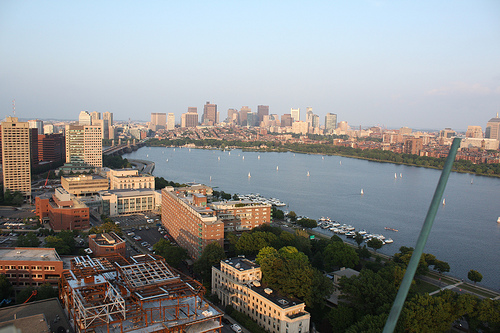Higher education can play a vital role in supporting the social and economic development of cities. As part of an ongoing research project, I have been considering the unique role of higher education serving as an anchor institution in urban development. Along with my co-author Karri Holley, we recently published a case study exploring these dynamics in more detail. The article, “The 400-Pound Gorilla”: The Role of the Research University in City Development, was recently published in Innovative Higher Education. In today’s post, I share an excerpt from the paper that discusses the current research literature on higher education’s power and potential for city development.

Universities play a major part in the social and economic growth of their cities.
The complex needs of cities and the various networks between cities and higher education institutions increase the pressure on universities to serve as active agents in local activity (Taylor & Luter, 2013).
This relationship is commonly understood within the parameters of community engagement, where higher education institutions and cities develop mutually beneficial, exchange-based relationships defined by reciprocity.
However, research universities may be more hesitant to participate in these relationships when compared to other institutional types (Weerts & Sandmann, 2008). These institutions tend to be complex and highly decentralized, and coordinating engagement efforts can be challenging.
Further, even if members of the faculty are interested in community engagement, they may be constrained by institutional norms of scholarship.
Weerts and Sandmann (2008, p. 704) concluded, “The two-way interaction with community proposed by leaders of engagement initiatives is often hampered because university research is designed narrowly, with community partners acting as passive participants, not partners in discovery.”
Cities constantly undergo changes in various social, economic, cultural, and physical dimensions, resulting in what researchers describe as “multi-layered cities” (Musterd & Murie, 2010).
These layers, conceptually analogous to geological layers, describe the complex environments of cities where each layer influences subsequent ones (Egedy, von Streit, & Bontje, 2013).
Multi-layered cities exhibit a diversity, broadly defined, that enable them to weather economic changes more than single-layered cities, such as the one company town.
For example, Rochester, New York relied significantly on Kodak to sustain the city’s growth in the mid to late 20th century and then suffered as the company declined (Egedy et al., 2013).
In a broader sense, the decline of manufacturing coupled with the growth of the knowledge economy increased attention on the role of higher education within cities.
The shift toward large-scale knowledge production and services pushed urban areas to consider how to transition their economies to the new economic reality.
Cities that redesign their economies, such as Pittsburgh, Pennsylvania, often focus on science, technology, and engineering.
Research on American and European cities that have adapted their economies successfully found that universities played a valuable role in supporting knowledge creation as well as recruiting knowledge workers to cities (Power, Ploger, & Winkler, 2010).
As a result, these cities transitioned from industrial to knowledge economies and contributed to the overall well-being of the city’s population.
Fundamentally, the importance of local context within cities has increased rather than diminished, in spite of globalization (Malecki, 2013).
While being located close together is an aspect of supporting business-university engagement, Bercovitz and Feldman (2006) found proximity to be just one ingredient in these relationships.
Higher education institutions can help develop a foundation of knowledge, creativity, and resources that can be shared between multiple organizations within a city, serving as key ingredients for economic growth (Dahlstrand, 2007).
Universities, in part, fuel innovation which may arise around cities, while also providing human resources and cultural capital related to students and faculty (Benneworth & Arbo, 2006).
Ultimately, cities need a culture of innovation and favorable policies toward entrepreneurship in order to capture the benefits of university interactions (Feldman & Desrochers, 2003).

